Air Europa is Spain’s second full-service carrier, after Iberia. It is a SkyTeam alliance member that operates numerous long-haul services to the U.S., Central America, the Caribbean, and Latin America, as well as short-haul service to Europe.
It is smaller than Iberia but flies to over a dozen intercontinental destinations, many of which are not served by Iberia. Air Europa follows a slightly different model in that many of these markets, such as Asuncion, Paraguay, are flown on a variable schedule (meaning only a few times a week vs. daily) whereas most of Iberia’s primary markets to Latin America are flown on a daily basis, if not more.
Air Europa Routes
In North America, Air Europa flies to New York JFK, Miami, Cancun, Havana, Santo Domingo, San Juan, Punta Cana, and San Pedro Sula. If you recall from last week’s post on Iberia’s Hub and Fleet series, you will remember that Honduras is the only Spanish-speaking country that will not have a direct link to Spain on Iberia metal, once Managua, Nicaragua is added in 2018. However, Air Europa currently fills that void for Honduras.
Boston also receives Air Europa service, on a seasonal basis.
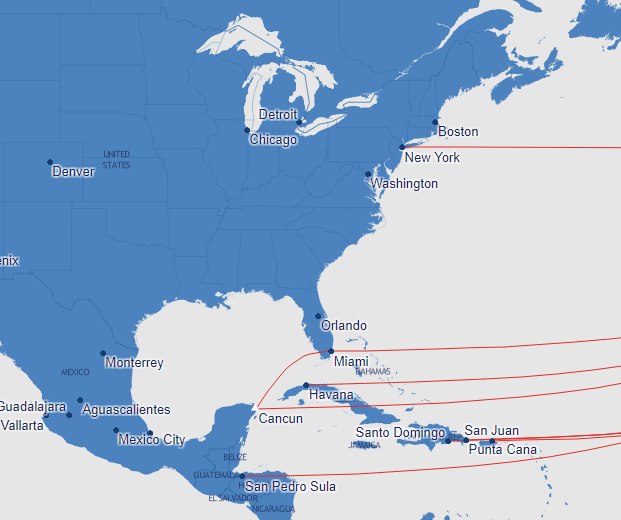
In Latin America, Air Europa flies to several non-Iberia markets, such as Guayaquil, Santa Cruz, Asuncion, Cordoba, Recife, and Salvador. The latter two are interesting as TAP Air Portugal flies to secondary Brazilian cities from its Lisbon hub, but Iberia leaves these markets to its competitor, Air Europa.
Elsewhere in Latin America, Air Europa flies to core markets like Bogota, Lima, Buenos Aires, Sao Paulo and Rio de Janeiro. It also flies to Montevideo, Uruguay, Caracas, (one of the few remaining European carriers that has not withdrawn from Venezuela despite the crises), and formerly flew to Santiago de Chile, but dropped service several years ago.
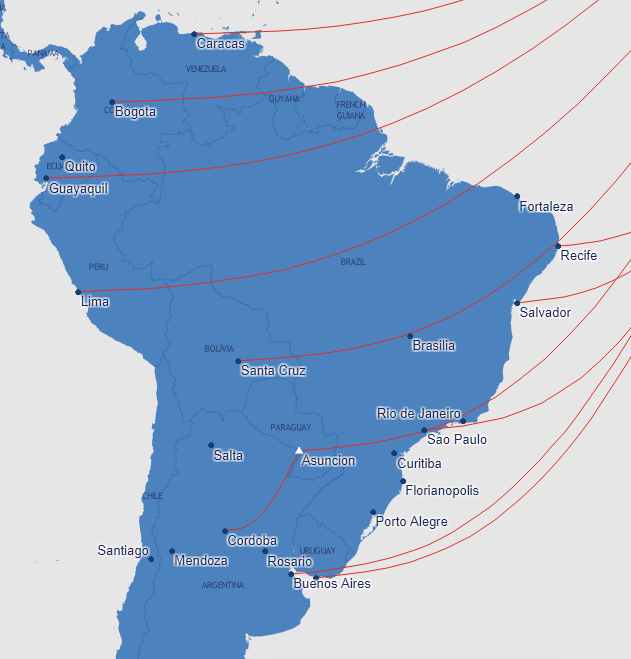
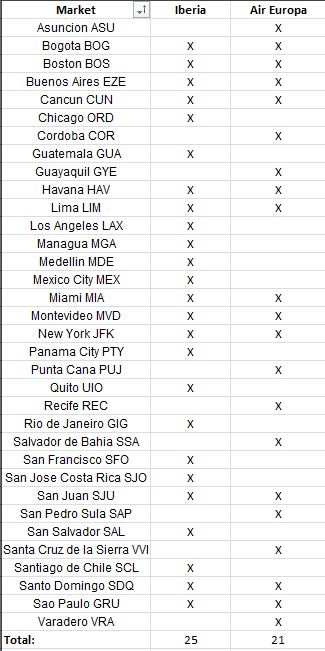
Unlike Iberia, Air Europa does not have a very robust short-haul market, nor does it operate any long-haul services to Asian, African, or Middle Eastern markets, with Tel Aviv as the sole exception.
The map below shows Air Europa’s short-haul network from its Madrid hub. It flies to core European cities like London, Frankfurt, Paris, Amsterdam, Rome, Brussels, Zurich, etc and short-haul domestic routes within Spain.

Fleet
Air Europa has a very simplified fleet structure: Embraer 195s and 737-NGs for short-haul, and Airbus A330’s and 787s for long-haul flights.
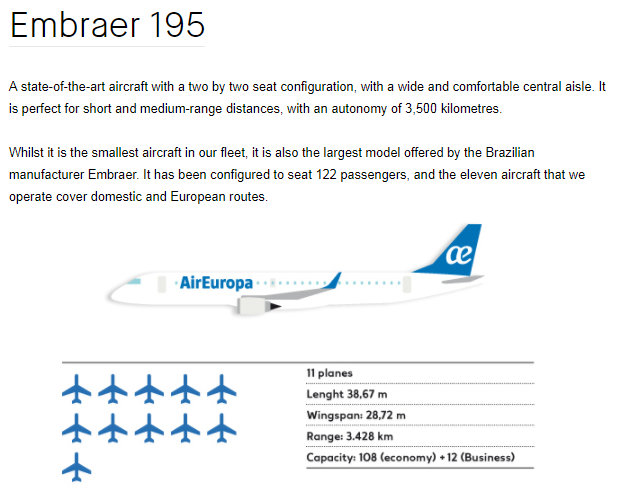
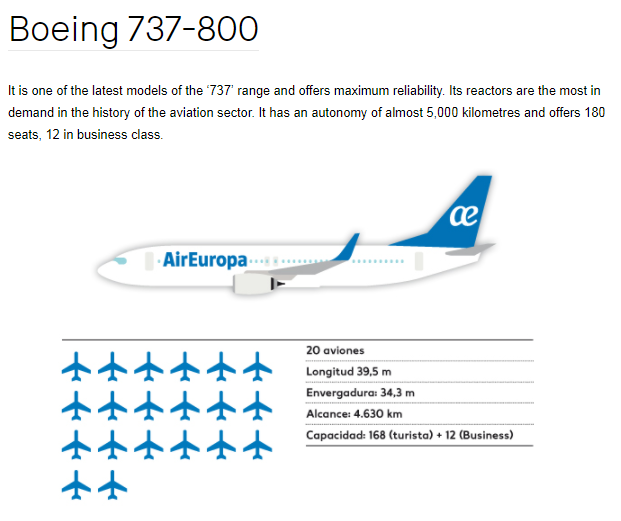
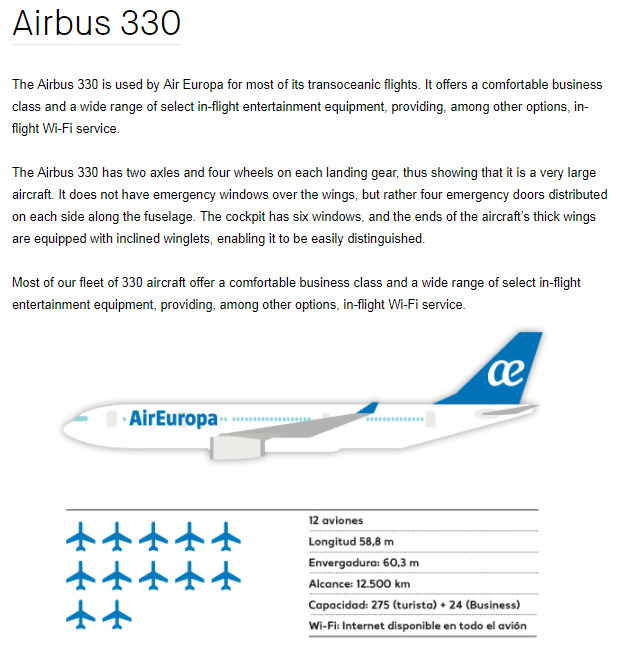
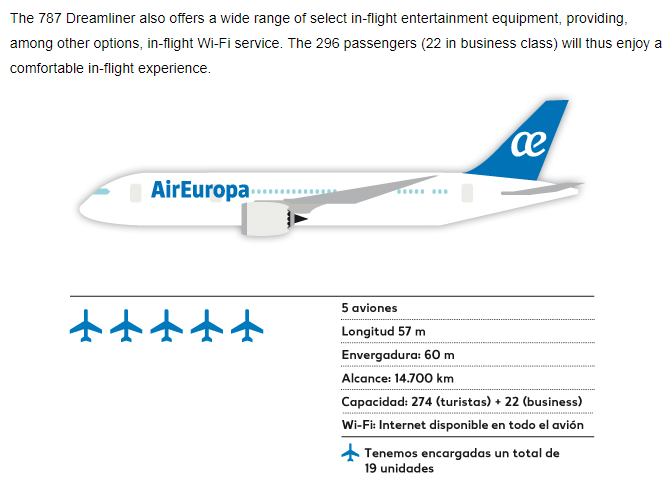
Air Europa currently has 14 787s on order, with an additional 8 on option. It has 8 in service, along with 12 Airbus A330s in service. It has 19 737-800s in service, with 20 of the 737-MAXs on order.
Air Europa: Hub and Fleet Strategy
The growth in Latin America to markets like Cordoba, San Pedro Sula, and Guayaquil, coupled with adding some key U.S. trunk routes like Boston and Miami, have propelled Air Europa into a competitive position where they intend to give Iberia a run for its money on long-haul flights. However, Air Europa lacks critical feed and scale in its short-haul network within Europe, which is a competency that Iberia possesses. Furthermore, Iberia has the additional feed from its short-haul subsidiaries like Vueling and Iberia Express, along with a much more variegated fleet type that allows it to adjust capacity to meet demand with more flexibility.
Iberia also has robust partnerships and joint ventures through OneWorld Alliance, Anti-Trust Immunity with American Airlines – British Airways and Finnair, and with its impending JV with LATAM. Air Europa lacks all of this.
However, Air Europa does have 787s that help lower operational costs and provide an elevated experience for customers over Iberia. Though, Iberia is replacing its Airbus A340s with new Airbus A330-NEOs and Airbus A350s.
Don’t forget to check out these installments of “The Hub” for other European carriers!
